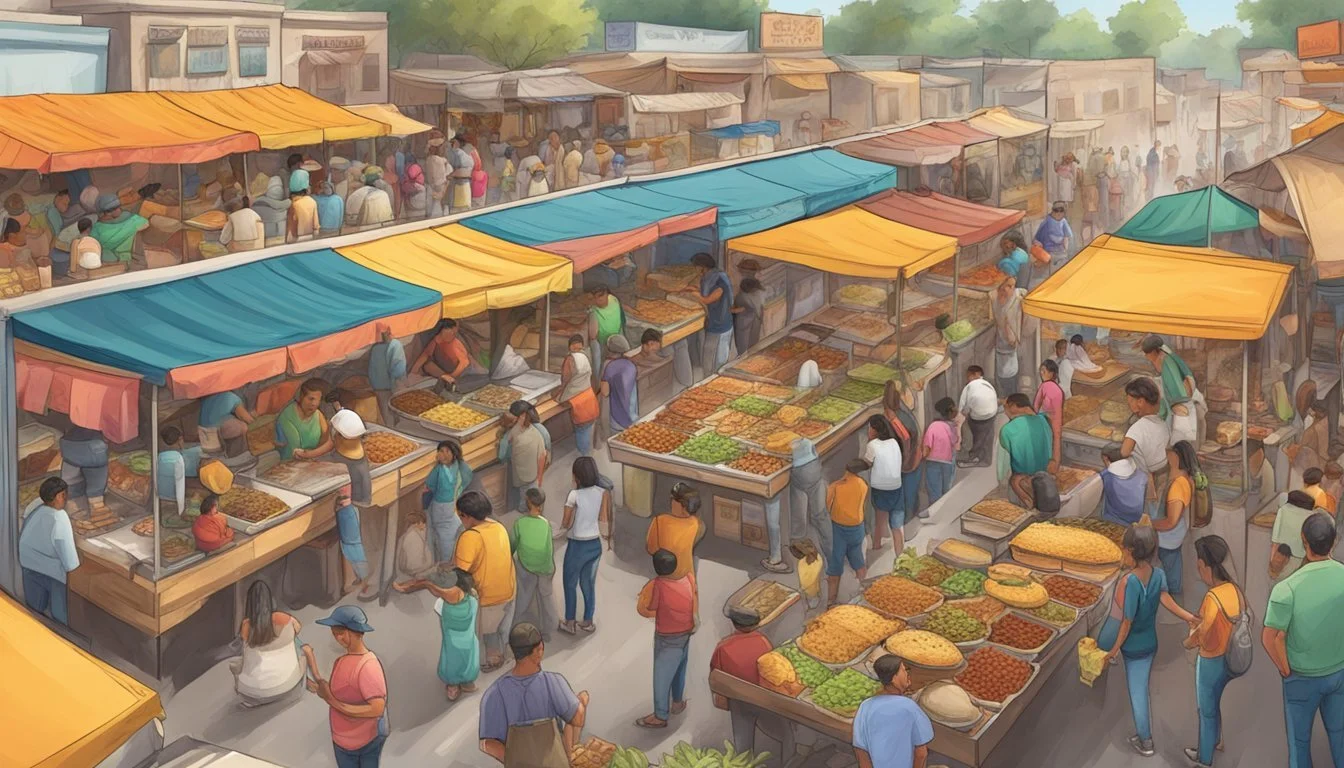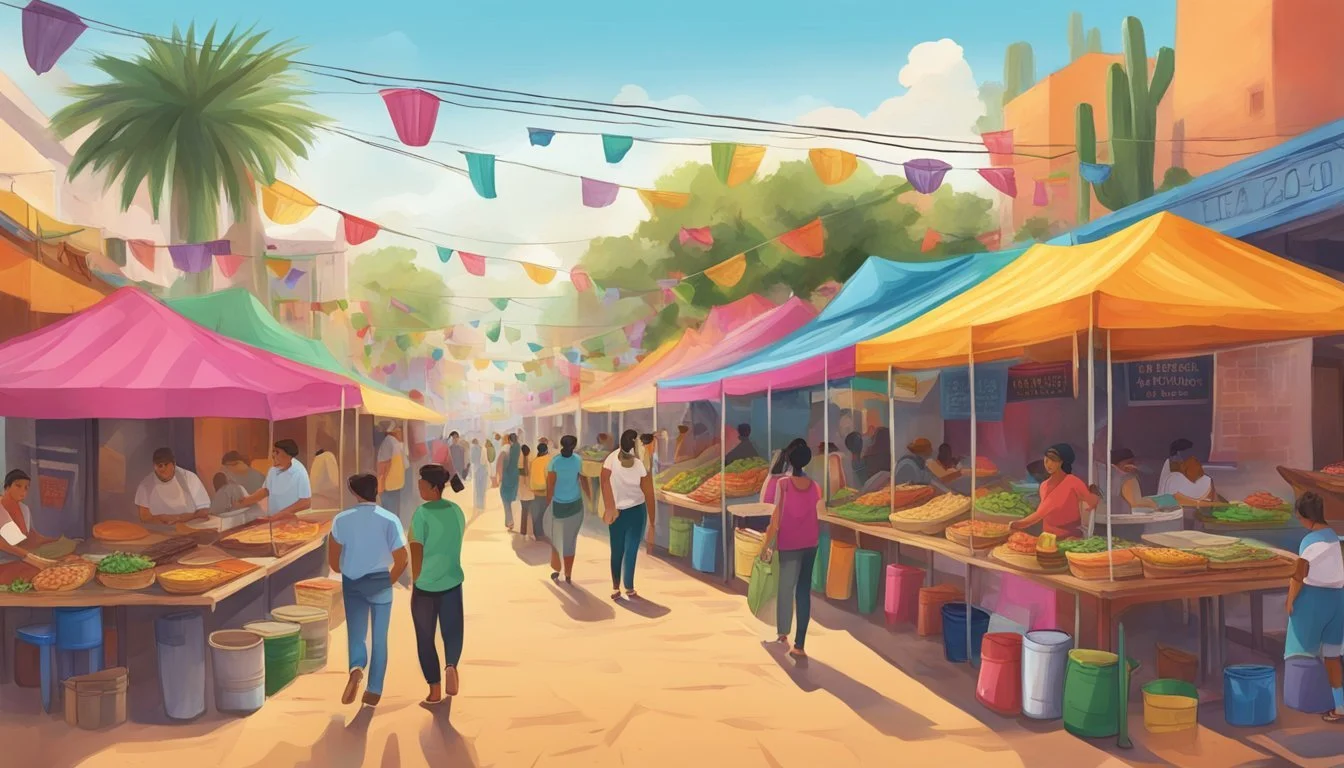The Best Tacos in Mexico's Migrant Trails
Culinary Gems Along the Journey
The culinary landscape of Mexico is a vibrant tapestry woven from its rich cultural history, and nowhere is this more evident than in the variety of tacos found along the country's migrant trails. From the bustling streets of Mexico City to the arid northern regions, each locale offers its interpretation of this iconic dish. As migrants and travelers journey across the nation, they carry with them the flavors of their homes, creating a dynamic food scene that tells the story of movement and evolution.
Tacos serve not only as a staple of Mexican cuisine but also as a symbol of the country's diverse culinary practices. In the north, one might encounter tacos laden with hearty cuts of beef wrapped in flour tortillas, while in the capital, they might taste the succulent al pastor, marinated pork carved from a spit and served with pineapple on a soft corn tortilla. Regional specialties such as tacos de cabrito in Nuevo León and tacos de machaca in Durango highlight the adaptability of tacos to local ingredients and traditions.
Exploring the best tacos on Mexico's migrant trails offers a glimpse into the country's soul, revealing how each region's distinctive taste contributes to the unified identity of Mexican cuisine. The journey through these trails is not just about the discovery of new flavors but also about understanding the narratives and experiences embedded within each bite.
History of Tacos
The inception of tacos dates back to pre-Hispanic civilizations like the Aztec and Mayan cultures, placing them at the historical heart of Mexican cuisine. These indigenous populations in Mexico made extensive use of corn, which was not only a staple food but also a cultural symbol. Corn tortillas, the foundation of the taco, were originally consumed by Mexican people many centuries ago.
The filling of the ancient tacos would differ from the modern assortment, with historical evidence suggesting the Aztecs primarily used fish and other local ingredients available to them. As Mexico encountered various cultural influences, including Lebanese immigrants in the early 20th century, the taco embraced new variations. The introduction of spit-grilled meats, (What wine goes well with grilled meats?) akin to shawarma, by these immigrants led to the creation of "tacos al pastor," a dish that reflects a blend of Mexican and Middle Eastern culinary traditions.
Contrary to popular belief, tacos were not a singular invention but rather the result of a long evolution influenced by diverse cultures and the ingenuity of Mexicans adapting to their changing environment. The portable nature of tacos made them an integral part of Mexico's developing street food scene, serving as an affordable and convenient meal for workers and travelers alike.
Evolution of Tacos in Mexico
Pre-Hispanic Era: Introduction of corn tortillas by the Aztec and Mayan civilizations.
19th Century: Growth in popularity among the working class.
Early 20th Century: Influence from Lebanese immigrants introducing "tacos al pastor."
Mid-20th Century: Economic changes leading to the rise of street food culture, further bolstering taco consumption.
Tacos have endured and thrived as a culinary practice, resonating with Mexicans from all walks of life. They stand as a testament to the country's rich history, its capacity to integrate foreign elements, and the continuous innovation by the people of Mexico.
Taco Ingredients and Variations
Exploring the rich tapestry of Mexico's tacos involves a deep dive into the variety of ingredients and variations that each region boasts. Each component plays a critical role in crafting the perfect taco experience.
Tortillas
The foundation of any taco is the tortilla. In Mexico, you'll mainly find two types: corn tortillas and flour tortillas. Corn tortillas are traditional and come in varieties such as blue-corn tortillas, offering a nuttier flavor. Northern Mexico prefers flour tortillas due to their pliability and durability.
Meat Fillings
Meat is a staple filling in tacos, with each region presenting its unique twist. From the tender and spicy tacos al pastor in the capital, featuring marinated pork, to the rich birria, a stewed meat delicacy often found in Jalisco. Other favorites include barbacoa, suadero, and carnitas.
Seafood Options
Coastal regions serve up a storm with fish tacos and seafood options like the smoked marlin tacos. Baja California is famous for its taco de pescado zarandeado—grilled fish seasoned with achiote paste.
Vegetables and Toppings
Freshness in a taco is provided by the vegetables and toppings. Essentials include diced cilantro, avocado, cabbage, and acidic pickled red onions. Pico de gallo introduces a zesty flavor, while guacamole adds creaminess.
Unique Regional Tacos
Mexico's regional diversity is reflected in unique tacos like tacos de cabrito (roasted goat) from Nuevo León or Oaxaca's tacos de chapulines (grasshoppers). Yucatán boasts the taco de cochinita pibil, slow-roasted pork marinated in citrus and annatto.
Cheese and Sauces
Topping off tacos are various cheeses such as Oaxaca's stringy quesillo. Sauces range from mild salsa verde to fiery habanero salsa, which add depth and character to each bite.
Fusion and Innovation
Lastly, the fusion and innovation happening on Mexico's taco scene are noteworthy. Chefs are combining traditional flavors with global influences, like using shawarma techniques to prepare tacos al pastor. Taco Bell's influence is minimal here, but local innovation thrives, continually reinventing this culinary staple.
Geography of Taco Cuisine
Mexican tacos are a tapestry of flavors and traditions, varying significantly by region due to local ingredients and historical culinary practices.
Mexico City
Mexico City, or CDMX, is known for its tacos al pastor, a dish reflecting the region's cosmopolitan history. These tacos are composed of spit-grilled pork that has been marinated in a blend of spices and achiote sauce. Taquería El Vilsito is renowned for serving some of the best tacos al pastor, a must-try for visitors.
Northern States
In the Northern States such as Baja California and Sinaloa, beef takes center stage in the taco arena. Flour tortillas replace the traditional corn, accommodating hefty fillings like carne asada. Baja California is also credited with the creation of tacos de pescado, specifically the battered and fried fish tacos that have become synonymous with the region.
Southern States
Moving to the Southern States, the Yucatán Peninsula is famous for its taco de cochinita pibil. This taco consists of pork marinated in citrus juice, colored with red annatto seeds, and slow roasted traditionally in a pit. Taquería El Turix is often celebrated for offering an authentic taste of this regional specialty.
Coastal Regions
The Coastal Regions shine with their seafood tacos. In particular, tacos de pescado tikinxik and tacos de pescado zarandeado are prominent, which feature grilled fish seasoned with achiote and other regional spices. Furthermore, lobster tacos, particularly taco de langosta con frijoles, showcase the luxurious side of coastal taco cuisine, making states like Baja California a seafood taco destination.
Taco Culture and Economics
In Mexico, tacos are not just a staple food but also an integral part of the economy, playing a significant role in the livelihood of many, particularly within the migrant trails where economic opportunities often follow cultural expressions.
Taquerías
Taquerías, or taco shops, are commonly owned and operated by local families, contributing to the community's micro-economy. These establishments can range from simple street-side stalls to full-service restaurants, often becoming go-to spots for migrants seeking familiar tastes. For instance, Baja California and Sinaloa have seen the rise of taquerías that serve regional specialties like tacos de barbacoa, each reflecting the unique culinary profile of the area.
Street Food Scene
The street food scene in Mexico is a testament to the country’s economic ingenuity, where tacos de canasta (basket tacos) serve as a portable and affordable meal for people on the move, including migrants. These street vendors can quickly adapt their offerings to demand, often directly encountering the economic forces that influence daily life and food choices.
Tacos on the Global Stage
With an expanding international presence, brands like Taco Bell have introduced Mexican cuisine to wider audiences. However, their products often diverge from authentic recipes. Tacos de kabrito, for example, are a traditional dish rooted in Mexico's culinary heritage that has yet to be popularized on such a scale, preserving its cultural authenticity despite globalization's reach.
Tacos and Migrant Trails
Tacos forge deep connections along migrant trails, not only providing comfort through cuisine but also acting as economic enablers. For many immigrants and migrants, selling authentic tacos provides a means of support that is deeply intertwined with their cultural identity. This economic activity often stretches across regional borders, reflecting the diversity and adaptability of taco culture.






